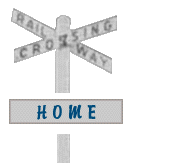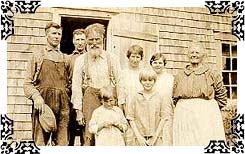








In the 1930's, the Great Depression cast hunger and poverty across the Island, and rural communities like Kensington were hit especially hard. There was no work for the skilled tradesmen, no money for buying goods from local merchants, and farmers could not find markets for their crops. As urban centres were strangled by the financial crisis, jobless young people were forced to migrate back to the Island, where the situation was-- if anything-- worse than what they had fled.
 Faced with this human
disaster, a co-operative movement started at St. Francis
Xavier University in Antigonish, Nova Scotia, and began
spreading across the Maritimes. The Antigonish movement
was described at the time as a "courageous attempt
of the people themselves to master the economic forces
that held them in bondage." To combat economic
collapse, it organized study groups and urged residents
of communities to band together, forming economic
collectives that were run both by and for their members.
Faced with this human
disaster, a co-operative movement started at St. Francis
Xavier University in Antigonish, Nova Scotia, and began
spreading across the Maritimes. The Antigonish movement
was described at the time as a "courageous attempt
of the people themselves to master the economic forces
that held them in bondage." To combat economic
collapse, it organized study groups and urged residents
of communities to band together, forming economic
collectives that were run both by and for their members.
On P.E.I., an economics professor, Dr. John T. Croteau, traveled to towns and villages across the province promoting the idea of co-operative credit societies. If the people of a community pooled their resources, he insisted, they could form a "baby bank," which was empowered by law to accept deposits and make loans to its members. Instead of being refused credit by banks, community members could help support each other through difficult times.
After months of study and discussion, the Kensington Credit Union was formed May 31, 1939 at a meeting held at the McMahon House, where 19 members joined. It was registered in Charlottetown on July 13, 1939. Mrs. E.G. Gillis served as the union's first secretary-treasurer and took care of its transactions directly from her home, opening the door to members at any time of the day or evening. Eventually, a more formal office was set up behind the Catholic church.
While Credit Unions were successful in coping with the Depression, World War II posed a new set of challenges for the economic co-operatives. Large numbers of its members-- and managers-- joined the forces, and insufficient funds led to instability and defaulted loans. In some cases, when the secretary-treasurer left for the front, members found themselves unable to cash their bonds.
 But the Credit Union
movement managed to stabilize itself in the post-war
period and has continued to change with the needs of the
community it serves. In the early 1980s, the request for
member loans was rising, and the branch lacked the
capital to service the demand. Fortunately, the credit
union at the Canadian Forces base in Summerside was at
the same time holding a surplus of development capital.
After much negotiation, the Kensington Credit Union
amalgamated with its counterpart at the Summerside base
to form the Malpeque Bay Credit Union, which took its
name from the fact that both towns are situated near the
shores of the picturesque bay. When the Summerside base
was closed in 1992, the assets of the Malpeque Bay Credit
Union were consolidated in the recently-expanded
Kensington branch.
But the Credit Union
movement managed to stabilize itself in the post-war
period and has continued to change with the needs of the
community it serves. In the early 1980s, the request for
member loans was rising, and the branch lacked the
capital to service the demand. Fortunately, the credit
union at the Canadian Forces base in Summerside was at
the same time holding a surplus of development capital.
After much negotiation, the Kensington Credit Union
amalgamated with its counterpart at the Summerside base
to form the Malpeque Bay Credit Union, which took its
name from the fact that both towns are situated near the
shores of the picturesque bay. When the Summerside base
was closed in 1992, the assets of the Malpeque Bay Credit
Union were consolidated in the recently-expanded
Kensington branch.
At present, the
Malpeque Bay  Credit Union employs 15
people and serves 4000 members. It is an important part
of an Island-wide network, with over 43,000 members
controlling in excess of $200 million in assets. While
circumstances are not now as desperate as they were when
the movement was started, the Credit Union philosophy
continues to play just as important a role in
strengthening and maintaining our Island communities.
Credit Union employs 15
people and serves 4000 members. It is an important part
of an Island-wide network, with over 43,000 members
controlling in excess of $200 million in assets. While
circumstances are not now as desperate as they were when
the movement was started, the Credit Union philosophy
continues to play just as important a role in
strengthening and maintaining our Island communities.